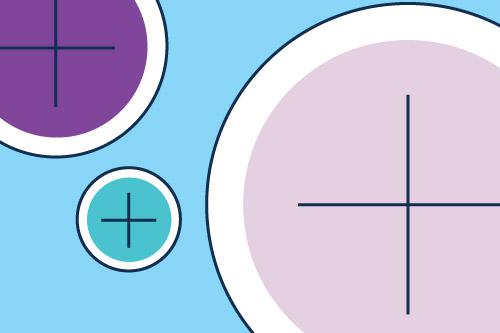Pumping and Hand Expression Basics
New to milk expression? Here’s what you need to know before you get started.
Pumping and hand expression can be great tools for breastfeeding moms. Learn what each one is, when you may need to do it, and what you need to get started. Your WIC breastfeeding staff can answer questions you have about milk expression.
Hand Expression Versus Pumping
"Expressing milk" means removing milk from your breast other than when your baby is feeding. There are two ways to express milk:
- Use your hands to remove your breast milk. This is called hand expression.
- Use a manual or electric machine called a pump. With these, the pump helps to remove your milk.
Often moms choose to use a pump, but all moms should know how to hand express milk. You can use this method if you forget your breast pump, if it breaks, or in a power outage.
Moms express their milk for a variety of reasons. Expressing lets you provide breast milk for your baby when you are apart. Your WIC breastfeeding staff may also recommend pumping to solve common breastfeeding challenges.
When to Express Milk
The best times for you to express milk depend on the reasons you are expressing.
- To have stored milk to feed your baby while you are apart, pump after nursing and while your baby is asleep. You may get the most milk right after you wake up in the morning.
- When you are away from your baby, try to express milk on the same schedule or as often as your baby would feed. This keeps your body making milk. Often moms who pump at work express enough milk to feed to their baby for the next work day.
What Breast Pumps Look Like
Mechanical breast pumps contain three main parts:
- Flange, also called a breast shield, is the cone-shaped part that goes over your nipple and part of your breast.
- Pump creates gentle suction to draw out your milk.
- Milk container catches the milk that you pump. You can disconnect the reusable bottle and use it to store the milk.
How Breast Pumps Work
For all kinds of pumps, you first place the flange over your nipple and breast. You can hold a flange on your breast with your hand. A breast pump works by creating a seal around your nipple and areola. Then it applies and releases gentle suction in cycles.

There are two main types of breast pumps:
- Manual: You squeeze a handle or lever to work the pump.
- Electric: A power cord or batteries run the motorized pump. These pumps may have different levels of suction to make pumping more like nursing your baby. Some electric pumps may be double pumps, meaning you can attach a flange to each breast and pump both sides at the same time.
If you have a battery-powered or electric pump, make sure you also have a backup plan in case of a power outage or emergency. It is a good idea to know how to hand express or have a manual pump.
Supplies
New to pumping? Here's a list of supplies that may make pumping easier and more comfortable.
Pump
- Bag to carry pump and parts.
- Extra pump parts - this way you have a clean set while the used set gets washed.
- Accessories, such as batteries or a car adapter for an electric breast pump.
Milk Storage
- Storage bottles.
- Small cooler or cooler bag and ice packs, for milk storage on the go.
Clean-up
- If handwashing, bottle and nipple cleaner brush.
- If using a dishwasher, basket or tray for placing small pump parts in the dishwasher.
- Clean paper towel or drying rack.
Clothing and Comfort
- Nursing cover or light blanket.
- Nursing bra, nursing tops, or tank tops.
Cleaning Your Pump
Cleaning your pump and parts regularly and thoroughly can keep you and your baby healthy. There are actions you should take before and after you use your pump to keep it clean. Check the manufacturer's instruction manual to determine which parts should be washed and the best method for removing parts that must be cleaned. Proper storage in between pumping can also help.











